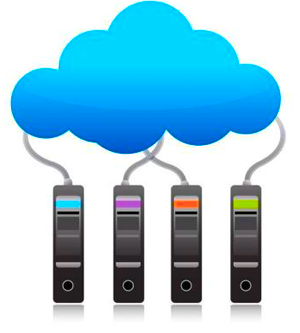 They sound the same and share some characteristics, but the practical uses of server virtualization compared to desktop virtualization are where the differences matter. A virtual desktop runs on nothing more than a monitor and a terminal unit with minimal internal components, but it gets its power and data from a server located somewhere on the network. Server virtualization allows business owners to run many servers from one physical machine, which ultimately reduces the costs.
They sound the same and share some characteristics, but the practical uses of server virtualization compared to desktop virtualization are where the differences matter. A virtual desktop runs on nothing more than a monitor and a terminal unit with minimal internal components, but it gets its power and data from a server located somewhere on the network. Server virtualization allows business owners to run many servers from one physical machine, which ultimately reduces the costs.
Desktop Virtualization Example
A client uses a virtual desktop to access the resources provided by a system server. The desktop appears just as it would on any standard operating system installation, but commands or input results in processing taking place in a remote location and output is fed back to the user through a network to a monitor, speaker, printer or other output device. An online storage solution like SkyDrive or Dropbox are a great example of desktop virtualization
Server Virtualization Example
A business uses Windows as its main operating system. Within the main windows host operating setups two virtual servers run the same version of Windows and they exist as two virtual separate machines (call them VM1 and VM2 for now), each with a portion of hardware assigned to facilitate any actions requested by users over the network. VM1 may run the business’ customer contact database, while VM2 runs the business’ office software such as accounts, word processing and email software. See server virtualization solutions from Dell for a better idea of what virtualization solutions offer businesses.
Which is Right for Your Business
In reality, businesses should use both desktop and server virtualization even if they only have a relatively small or low powered server. It’s not always practical for a micro-business to use these techniques because a couple of systems running in one room might function just as well for certain purposes with an ad-hoc network, but anything more than one or two systems and virtualization could dramatically help improve how your business allocates system resources.
The problem is that the decision to install a server needs to take place before you invest in individual workstations for your business in order to gain the most from a client server IT setup. Some features such as data sharing and disaster recovery will still be of benefit, but workstation processing power may be redundant or too great a demand placed on a server that was originally designed to act as a workstation.
Being part of the Dell team, I know we have a great range of virtualization options on offer. Visit the site and browse the solutions on offer.
Leave a Reply